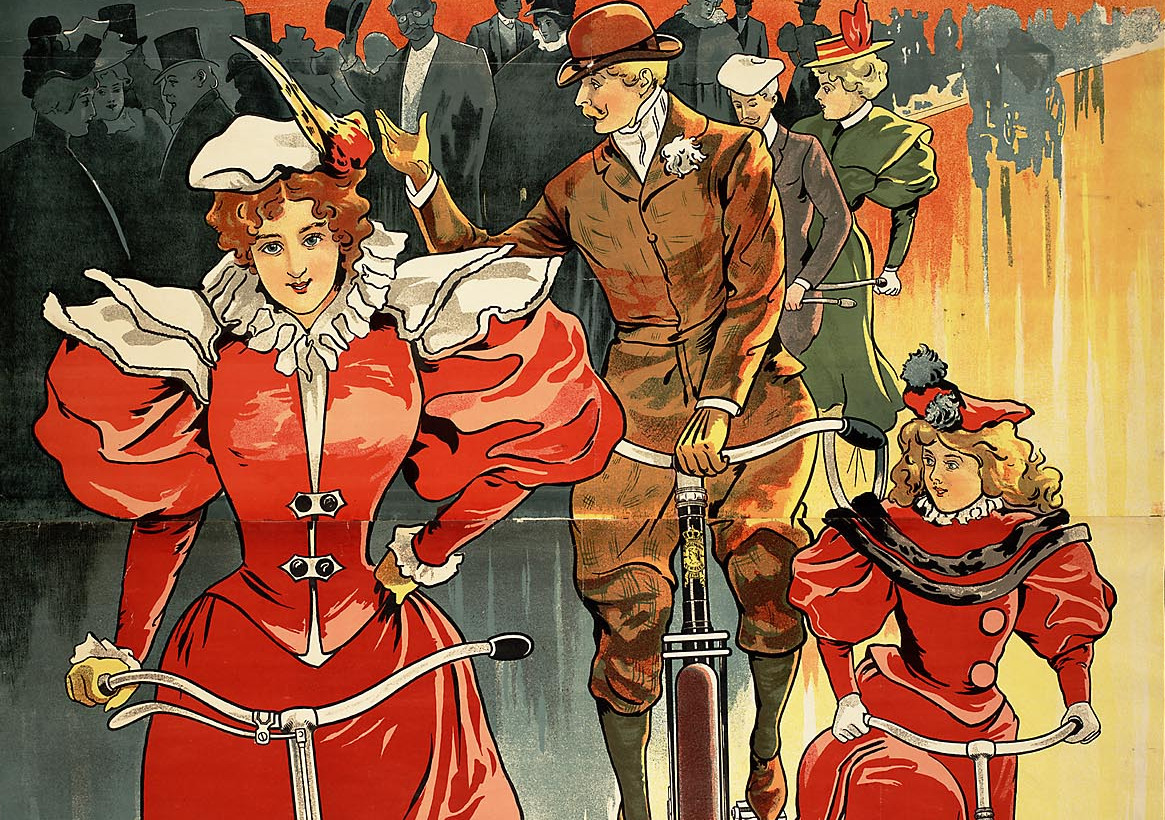SWITRS: On What Days Do Cyclists Crash?

It is time to use SWITRS data to look at vehicle crashes in California again. I have previously used the data to look at when cars crash—during holidays when people both drive to work and to parties after—and when motorcycles crash—during the summer when its good riding weather. Today I want to look at something a little closer to my heart: bicycles.
I have been commuting on my bike for years now, and when I was younger I used to put in thousands of miles a year for fun. So knowing more about when crashes happen is something I am very interested in.
As per usual, the Jupyter notebook used to perform this analysis can be found here (rendered on Github).
A Simple Model
Before we dig into the data, I have a simple model for how many bicycle crashes there are. It is:
\[N_{\textrm{crashes}} = P_{\textrm{car-bike}} \, L_{\textrm{miles biked}} \, \lambda_{\textrm{cars per mile}}\]That is, the number of crashes involving bicycles (\(N\)) is the probability of a crash happening when a bike encounters a car (\(P\)) times the number of cars encountered (\(L \lambda\)). This ignores some crashes, like solo crashes and those that do not involve a car, but these are rare.1
We won’t be able to test the validity of this model with the SWITRS data alone, but we can use it to reason about what is happening. For example, if the number of crashes increases, that could be because there are more cars or bikes on the road, or because the probability of collision increased (perhaps due to distracted drivers or worse average weather).
Data Selection
I selected crashes involving bicycles from the SQLite database (discussed previously) with the following query:
SELECT Collision_Date FROM Collision
WHERE Collision_Date IS NOT NULL
AND Bicycle_Collision == 1 -- Involves a bicycle
AND Collision_Date <= '2017-12-31' -- 2018 is incomplete
This gave me 223,772 data points to examine spanning 2001 to 2017. Just as before, crashes from the most recent year are rejected because the database dump comes from September 2018, and so the year is incomplete.
Crashes per Week
For car crashes, I found that there was a large dip in 2008 as people stopped driving to work during the Great Recession. For motorcycle crashes, I found strong seasonality as people hung up their helmets during the winter. For bicycles, we have the following pattern:
It shows features similar to both cars and motorcycles:
-
The number of crashes increases after 2008, and then begins decreasing after 2013, almost exactly the opposite of the car pattern.
-
Crashes are highly seasonal, just like motorcycles. Apparently neither cyclists nor bikers like riding in the rain.
Thinking back to the model we can try to reason about the trend. We know the number of cars increased, so the decrease in crashes in the last few years is either due to a decrease in the number of cyclists—possibly because they traded their bikes for cars as they found employment—or a decrease in the likelihood of a crashes—perhaps because drivers are more used to cyclists and look out for them.
Day-by-Day
Car are involved in crashes on holidays during which the drivers also work, like Halloween. Motorcycles are in crashes during summer holidays. Bicycles, on the other hand, have no holidays with a large excess in the number of crashes. Some holidays, like Christmas and Thanksgiving, keep people from getting on their bikes, but none seem to motivate to get out and ride.
New Year’s Day, St. Patrick’s Day, and the 4th of July are all higher than they would be if they were not holidays, although you can’t tell from this plot. On those days, people tend to go out and celebrate with alcohol, which leads to solo crashes. I will examine that in a future post.
Day of the Week
For cars, weekends show a decrease in the number of crashes as people stop commuting. For motorcycles, weekends show an increase in the number of crashes as people use their time off to ride. As a recreational cyclist, I expected crashes to increase on the weekend as people put on their Lycra and take to the back roads for fun. But this is not the case:
These violin plots show the distribution of crashes by day of the week over the 17 year period. There is a large drop in the number of crashes on weekends. This is surprising to me. I would have expected a lot more cyclists to be out on the weekend, leading to more interactions with cars.
It’s possible that there are more cyclists on the weekend but there are enough fewer cars that the crash rate still goes down. Or perhaps the riders are better at avoiding crashes. Or maybe the cyclists are out in the countryside away from the cars. Or perhaps weekend drivers are better at avoiding cyclists. Without more data, we can’t tell.
Conclusion
This analysis of bicycle crashes surprised me a little. I expected bikes to show a similar pattern to motorcycles, since they are both used to commute and for fun. However, bikes show a greatly reduced crash rate on the weekend while motorcycles show an increase. Bikes and cars also seem to trade off, with car crashes increasing in recent years while bike crashes fall off. Further study and additional data is necessary before I can determine the reasons behind this trend.
-
Of the 223,772 recorded crashes with bicycles, 89% involve a car. There is a bias though: SWITRS reports are filled out when the police or CHP are called to the scene. As such, they skew towards worse accidents. ↩